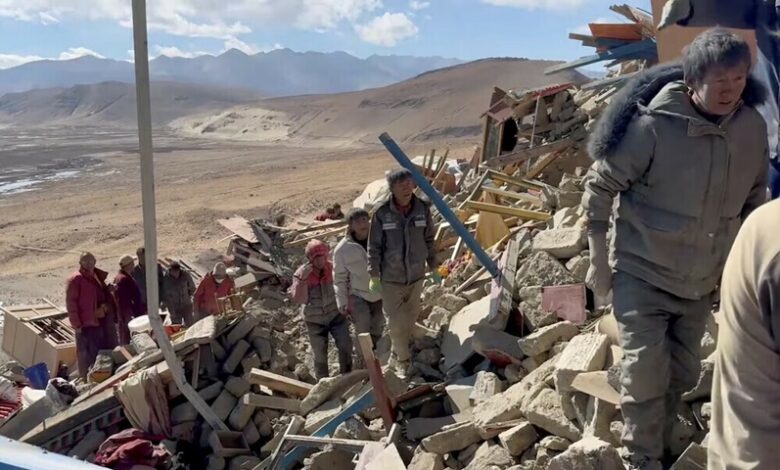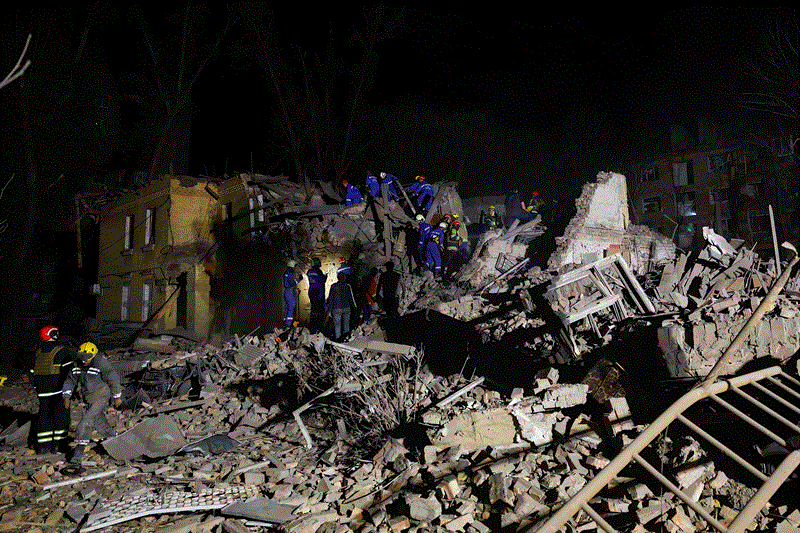Urgency grows in the search for survivors of the Tibet earthquake.
News Mania Desk / Piyal Chatterjee / 8th January 2025

More than 400 people in Tibet who were stranded by a catastrophic earthquake in the Himalayan foothills have been rescued, Chinese officials said Wednesday, but an unknown number remain missing due to the harsh cold weather.
The epicentre of Tuesday’s magnitude 6.8 earthquake, one of the region’s most violent in recent years, was in Tingri, China’s Tibet, roughly 80 kilometers (50 miles) north of Mount Everest, the world’s highest peak. It also rattled structures in neighboring Nepal, Bhutan, and India. Twenty-four hours after the temblor occurred, individuals buried beneath rubble would have spent the night in sub-zero conditions, increasing the burden on rescuers searching for survivors in an area the size of Cambodia.
Temperatures in the high-altitude area plummeted to minus 18 degrees Celsius (0 degrees Fahrenheit) overnight. People stranded or without shelter are at risk of fast hypothermia and may only survive for five to ten hours, even if unharmed, according to specialists. At least 126 people were killed and 188 injured on the Tibetan side, according to official television CCTV. There have been no deaths recorded in Nepal or elsewhere. Chinese authorities have yet to say how many individuals are still missing. An official in Nepal told Reuters that the quake demolished a school building in a hamlet near Mount Everest that straddles the Nepali-Tibetan border, although no one was inside at the time.
Jost Kobusch, a German climber, said that he was just above the Everest base camp on the Nepali side when the earthquake occurred. His tent shook fiercely, and he stated he witnessed many avalanches come down, but he was unharmed. According to Satori Adventure, Kobusch departed the base camp on Wednesday and was on his way to Kathmandu via Namche Bazaar. An early inspection revealed that 3,609 dwellings had been damaged in Tibet’s Shigatse district, which is home to 800,000 people, according to state media late Tuesday, citing local officials. Over 1,800 emergency responders and 1,600 military have been rushed to the area.
CCTV footage showed families gathered in rows of blue and green tents swiftly built by military and humanitarian workers in villages around the epicenter, where hundreds of aftershocks have been reported. According to state media, more than 30,000 persons impacted by the earthquake have been moved. Tingri is Tibet’s most populated county near China’s border with Nepal, with 60,000 people living there. It is managed from Shigatse, the ancient seat of the Panchen Lama, one of Tibetan Buddhism’s most prominent leaders.
According to official media, no damage has been detected at Shigatse’s Tashilhunpo monastery, which was built in 1447 by the first Dalai Lama.
The 14th and current Dalai Lama, Japanese Prime Minister Shigeru Ishiba, Russian President Vladimir Putin, and Taiwanese President Lai Ching-te have all offered their sympathies to the earthquake victims.
Earthquakes frequently strike southwestern China, Nepal, and northern India as a result of the Indian and Eurasian tectonic plates colliding and pushing up an ancient sea that is now the Qinghai-Tibetan plateau. As of 8 a.m. (0000 GMT) on Wednesday, the China Earthquake Networks Centre reported that more than 500 aftershocks with magnitudes of up to 4.4 had occurred in the aftermath of the earthquake. According to local earthquake bureau statistics, 29 earthquakes with magnitudes of 3 or higher had occurred within 200 kilometres (120 miles) of Tuesday’s epicenter in the last five years.
The quake on Tuesday was China’s deadliest since a 6.2 magnitude earthquake in 2023, which killed at least 149 people in a remote northern area.
An 8.0 magnitude earthquake struck Chengdu, Sichuan, in 2008, killing at least 70,000 people, making it China’s worst earthquake since the 1976 Tangshan quake, which killed at least 242,000 people.






